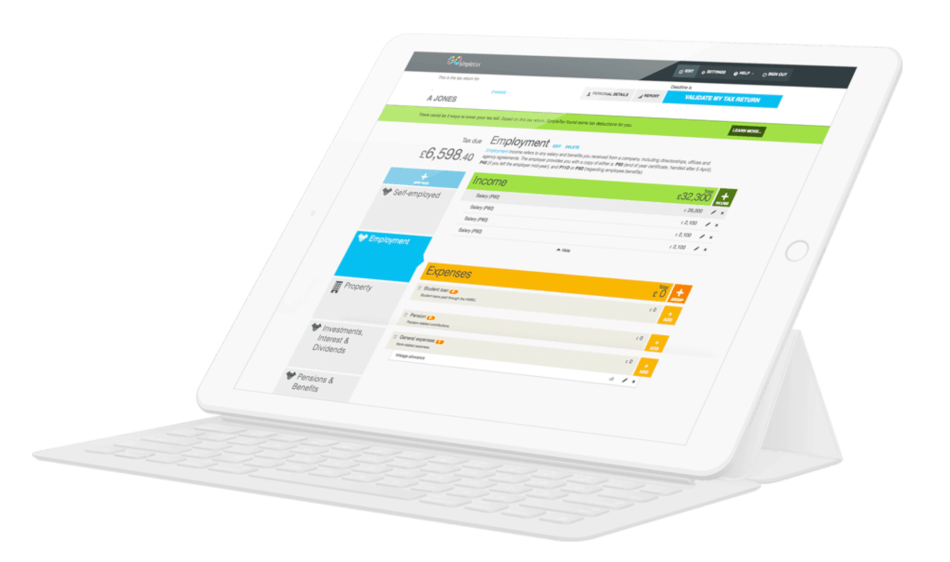Bookkeeping 101: A guide to becoming self employed
Before taking the leap into the self-employed world, you’ll inevitably perform a final check – a process similar to patting your pockets when you’re about to leave the house for a holiday. Despite confirming (twice) that…
10 Minute Read
Last Updated: 14th March 2022
Before taking the leap into the self-employed world, you’ll inevitably perform a final check – a process similar to patting your pockets when you’re about to leave the house for a holiday. Despite confirming (twice) that you’ve done what you need to do, you’ll probably still have a nagging feeling you’ve forgotten something. For most people entering self-employed territory, this “something” is bookkeeping.
Managing your own accounts as a freelancer or contractor is considerably different – and there are a lot of preparations to make before deciding to officially work for yourself. This blog functions as a bookkeeping 101 guide to becoming self-employed, offering some essential info to help you get started.
Get to know your responsibilities
Before you register as a sole trader or set up a business partnership, you need to understand that your tax obligations are about to change. Self-employed workers are expected to tell the taxman exactly what they’ve been earning, and submit these figures to HMRC before the Self Assessment tax return deadline on 31st January.
Things become a little more complex if you’re a self-employed subcontractor, as you’ll have the Construction Industry Scheme to think about, and you should also be prepared to set up PAYE if you’re recruiting staff (you’ll need to calculate and deduct employee tax yourself).
You’ll also need to learn how to fill Self Assessment tax return forms in and where to send them. The self-employed pay tax on every penny of profit above the Personal Allowance limit (currently set at £11,850), and forms can be sent via mail, through HMRC, or using Self Assessment tax return software. The government is continuing to push taxpayers towards the latter option as paper returns are phased out.
Understand what you can claim
Whilst adjusting to all these new tax obligations can take some getting used to, it’s worth pointing out that you won’t just be telling the taxman about taxes you owe. You’ll also be reminding him of what overpaid taxes he owes you.
Self-employed workers are entitled to a to claim a range of ‘tax deductible expenses’, including stock, insurance, uniform, travel, professional subscriptions, energy bills, rent, business rates, maintenance work, accommodation, and food and drink when you’re out on business trips.
It’s important to gain a good understanding of what you can claim to keep your tax bill down as much as possible.
Make things easy for yourself
Logging all the aforementioned expenses can prove to be a rather exhausting experience on the eve of the Self Assessment tax return deadline. Instead of leaving it all until last minute and rushing to the post office for Next Day Delivery, it’s far more effective and affordable to use tax return software – not to mention less stressful.
You can enjoy a running start to your self-employed career with GoSimpleTax – a terrific piece of Self Assessment tax return software that allows you to log in from anywhere, and record your self employed income and expenses on the go. It’ll produce and submit your Self Assessment to HMRC for you.
If you need more than a simple recording system and want to send invoices and submit VAT returns then why not take a look at GoSimpleBooks? It can log your income, outgoings, cash flow, VAT and more. You’ll be able to see where your new business is heading, as well as easily produce invoices and reminders to clients if required.
We hope you’ve found our bookkeeping 101: guide to becoming self-employed useful. You can get a free trial of GoSimpleTax and GoSimpleBooks software right now. If you have any questions, simply get in touch with our team and they’ll be able to help.
Blog content is for information purposes and over time may become outdated, although we do strive to keep it current. It's written to help you understand your Tax's and is not to be relied upon as professional accounting, tax and legal advice due to differences in everyone's circumstances. For additional help please contact our support team or HMRC.
How to keep track of your side hustle income and expenses
16 Apr 2024
12 things business partners should know about Self Assessment
15 Apr 2024
Everything you need to know about payments on account
31 Mar 2024
How GoSimpleTax Works
Register
Simply register for free with your full name and email address.
Select Your Income
Select the income you receive and follow the hints and tips for potential tax savings.
Validate Your Information
Validate your personal information and submit directly to HMRC to get confirmation in just seconds.

Work Anywhere, With Any Device
Gone are the days of fretting over a calculator surrounded by scraps of paper at the eleventh hour.
GoSimpleTax’s tax return software uses the information you upload in real time to calculate your income and expenditure, working out the tax you owe and sending you helpful notifications when there’s the possibility of a mistake.
"The software is intuitive and proved very easy to navigate. I found the whole process refreshingly simple. I saved a lot of money too!"
Steve J.
Ordained Presbyter
"Easy to use and value for money. Everything you need to do your tax."
Gordon J.
Self Employed
"It fills in all the forms and sends them to the Inland Revenue. Not expensive either. Takes the stress out of doing your tax return online."
Ross G.
Team Rector
